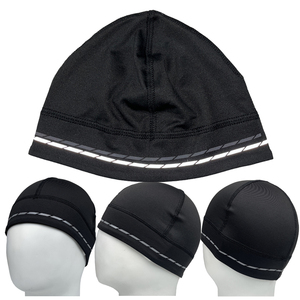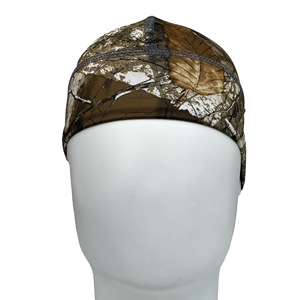
All categories
Featured selections
Trade Assurance
Buyer Central
Help Center
Get the app
Become a supplier

(675 products available)















































 Ready to Ship
Ready to ShipSkiing is a thrilling and exhilarating sport that attracts enthusiasts from around the world. However, safety should always be a top priority, and that's where skull cap ski helmet come into play. These crucial pieces of equipment are designed to protect skiers from head injuries, ensuring that they can enjoy their time on the slopes with peace of mind. skull cap ski helmet are constructed using advanced materials and technology, providing both comfort and protection. Understanding the various aspects of skull cap ski helmet can help skiers make informed decisions when selecting the right helmet for their needs.
There is a wide variety of skull cap ski helmet available on the market, each catering to different preferences and safety requirements. Common types include full-shell helmets, half-shell helmets, and in-mold helmets. Full-shell helmets provide maximum protection, covering the entire head and ears, making them ideal for high-speed skiing or challenging terrains. Half-shell helmets, on the other hand, offer more ventilation and are lighter, making them popular among recreational skiers. In-mold helmets are crafted by fusing a hard outer shell with an impact-absorbing foam liner, providing a lightweight and comfortable fit. Each type of skull cap ski helmet is engineered to meet specific safety standards, ensuring optimal performance on the slopes.
skull cap ski helmet are equipped with a range of features that enhance their functionality and user experience. Ventilation systems are a key feature, allowing skiers to regulate airflow and maintain comfort in varying weather conditions. Some helmets come with adjustable vents, giving users control over the amount of airflow. Fit systems are another important feature, providing a customizable fit to accommodate different head sizes and shapes. Many skull cap ski helmet also include audio compatibility, allowing skiers to listen to music or communicate with others while on the slopes. Additionally, removable liners and earpads offer easy cleaning and customization, ensuring that the helmet remains comfortable and hygienic throughout its use.
The construction of skull cap ski helmet involves the use of advanced materials designed to maximize protection and comfort. The outer shell is typically made from polycarbonate or ABS plastic, offering durability and impact resistance. The inner liner is crafted from expanded polystyrene (EPS) foam, which absorbs shock and reduces the risk of head injury during a fall. Some helmets incorporate multi-directional impact protection system (MIPS) technology, which provides additional protection by allowing the helmet to rotate slightly upon impact, reducing rotational forces on the brain. The combination of these materials ensures that skull cap ski helmet provide a high level of safety without compromising on comfort or style.
Selecting the right skull cap ski helmet involves considering several factors to ensure a perfect fit and optimal protection. Begin by measuring the circumference of your head above the ears and eyebrows to determine the appropriate helmet size. Try on multiple helmets to assess fit and comfort, ensuring that the helmet sits snugly without causing pressure points. Consider the type of skiing you will be doing and select a helmet that offers the appropriate level of protection and ventilation. Look for helmets with adjustable fit systems and customizable features to accommodate your specific needs. Finally, choose a skull cap ski helmet that meets recognized safety standards, providing assurance of its protective capabilities.
Ensuring a proper fit for your skull cap ski helmet is crucial for optimal safety and comfort. A helmet that is too tight can cause discomfort and pressure points, while one that is too loose may fail to provide adequate protection during a fall. To achieve the best fit, measure your head's circumference and try on different sizes and models. The helmet should sit level on your head, covering the forehead without obstructing vision. Adjustable fit systems and padding can help tailor the helmet to your specific needs, ensuring that the skull cap ski helmet stays securely in place as you navigate the slopes.
When selecting a skull cap ski helmet, it's essential to consider its compliance with recognized safety standards. These standards, such as ASTM F2040 or CE EN1077, ensure that the helmet has undergone rigorous testing to provide adequate protection against impacts. Helmets equipped with advanced technologies like MIPS offer additional safety benefits by reducing rotational forces during a fall. It's important to verify the presence of these certifications on the helmet's label, as they provide assurance of the helmet's protective capabilities. Investing in a certified skull cap ski helmet can significantly enhance your safety on the slopes.
Modern skull cap ski helmet offer various features that can be customized to enhance the skiing experience. Ventilation systems allow for adjustable airflow, helping to maintain comfort in different weather conditions. Some helmets come with audio compatibility, enabling skiers to listen to music or communicate with companions. Removable liners and earpads offer convenience for cleaning and personalization. These customizable features ensure that your skull cap ski helmet not only provides protection but also enhances your overall skiing experience, allowing you to enjoy the slopes with confidence and style.
When selecting a size for your skull cap ski helmet, measure your head's circumference above the ears and eyebrows. Try on different helmets to ensure a snug fit without pressure points. The helmet should sit level and cover the forehead adequately.
Not all skull cap ski helmet come with MIPS technology. It's a feature that provides additional protection by reducing rotational forces during impacts. Check the helmet's specifications to confirm if it includes MIPS.
Many modern skull cap ski helmet come with audio compatibility, allowing you to integrate speakers or headphones. This feature enables you to listen to music or communicate with others while skiing.
To keep your skull cap ski helmet in good condition, regularly clean the removable liners and earpads. Avoid using harsh chemicals on the helmet's surface. Store the helmet in a cool, dry place when not in use.
Safety certifications on skull cap ski helmet indicate that the helmet has undergone testing to meet specific protective standards. These certifications provide assurance of the helmet's ability to protect against impacts, enhancing your safety on the slopes.